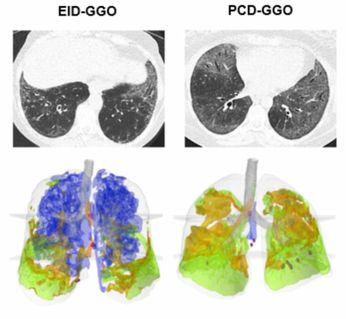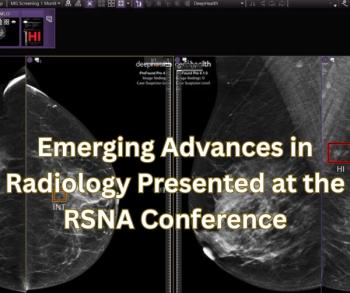Emerging research suggests that ultrasound-derived fat fraction (UDFF) assessment may enhance differentiation of hepatic steatosis grading beyond traditional non-invasive measures and provide a possible alternative to magnetic resonance imaging (MRI) evaluation.
For the prospective multicenter study, recently published in Insights into Imaging, researchers compared ultrasound-derived fat fraction (UDFF) to reference standards of MRI proton density fat fraction (MRI-PDFF), proton magnetic resonance spectroscopy (1H-MRS) and liver biopsy histopathology for the assessment of 790 people with suspected metabolic dysfunction-associated steatotic liver disease (MASLD). The study authors also compared UDFF to the non-invasive tests Hepatic Steatosis Index (HSI) and Fatty Liver Index (FLI).
In validation testing, UDFF provided 88.7 percent sensitivity in comparison to 87.9 percent for HSI and 67.9 percent for FLI in the detection of hepatic steatosis > S1. The use of UDFF also offered significant higher sensitivity for moderate (86.5 percent vs. 72.9 percent for HSI and 58.6 percent for FLI) and severe hepatic steatosis (81.5 percent vs. 72.2 percent for HSI and 71.1 percent for FLI), according to the study authors.
For study participants with body mass index (BMI) > 23 kg/m2, the researchers found that UDFF and subsequent HSI offered 94.5 percent and 98.9 percent sensitivity rates, respectively, for ruling out hepatic steatosis. The study authors added that sequential use of UDFF and HSI resulted in a 10.4 percent reduction of indeterminate cases in this patient population in contrast to employing UDFF alone.
“The study offers strong evidence that UDFF is a dependable, noninvasive, and widely available method for evaluating hepatic steatosis. Especially for patients with high BMI, the sequential method of UDFF and HSI for the risk stratification of hepatic steatosis could effectively minimize the proportion of patients in the gray zone,” wrote lead study author Liyun Xue, M.D., who is affiliated with the Department of Ultrasound at Huashan Hospital and Fudan University in Shanghai, China, and colleagues.
Three Key Takeaways
- UDFF shows strong diagnostic performance. Ultrasound-derived fat fraction (UDFF) demonstrated high sensitivity (88.7 percent) for detecting hepatic steatosis >S1 and strong agreement (ICC 0.90) with MRI-PDFF, suggesting comparable accuracy to MRI-based and serum index methods.
- Sequential UDFF–HSI testing improves risk stratification. In patients with BMI >23 kg/m², combining UDFF with the Hepatic Steatosis Index (HSI) improved sensitivity for excluding hepatic steatosis (up to 98.9 percent) and reduced indeterminate cases by 10.4 percent.
- Practical, accessible tool for liver fat assessment. Given its short acquisition time (~3 minutes) and compatibility with standard ultrasound equipment, UDFF offers a cost-effective, portable, and scalable alternative to MRI for evaluating hepatic steatosis, especially in resource-limited settings.
The researchers also determined that UDFF demonstrated a 90 percent interclass correlation coefficient (ICC) with MRI-PDFF.
“Given the high cost and limited availability of MRI, particularly in resource-limited settings, UDFF offers a practical solution for assessing liver fat content. The accessibility of UDFF makes it appealing, as it integrates easily into routine clinical workflows, requiring only about 3 min to complete the examination using existing ultrasound platforms. Ultrasound systems demonstrate superior portability compared to MRI scanners, and this operational advantage facilitates bedside assessments,” pointed out Xue and colleagues.
(Editor’s note: For related content, see “FDA Clears AI-Guided Point-of-Care Ultrasound for Liver Diseases,” “Seven Takeaways from New Literature Review on Ultrasound and Hepatocellular Carcinoma” and “Study: Contrast-Enhanced Ultrasound May Improve LI-RADS Assessment of High-Risk Indeterminate Liver Lesions.”)
In regard to study limitations, the authors acknowledged that the cohort, comprised entirely of Chinese participants with MASLD, may thwart extrapolation of study findings to broader populations. They noted lower BMI cutoffs for identifying overweight and obese in Asian populations in contrast to non-Asian groups. The researchers also conceded a lack of direct comparison of MRI-PDFF, biopsy pathology and proton magnetic resonance spectroscopy.





























